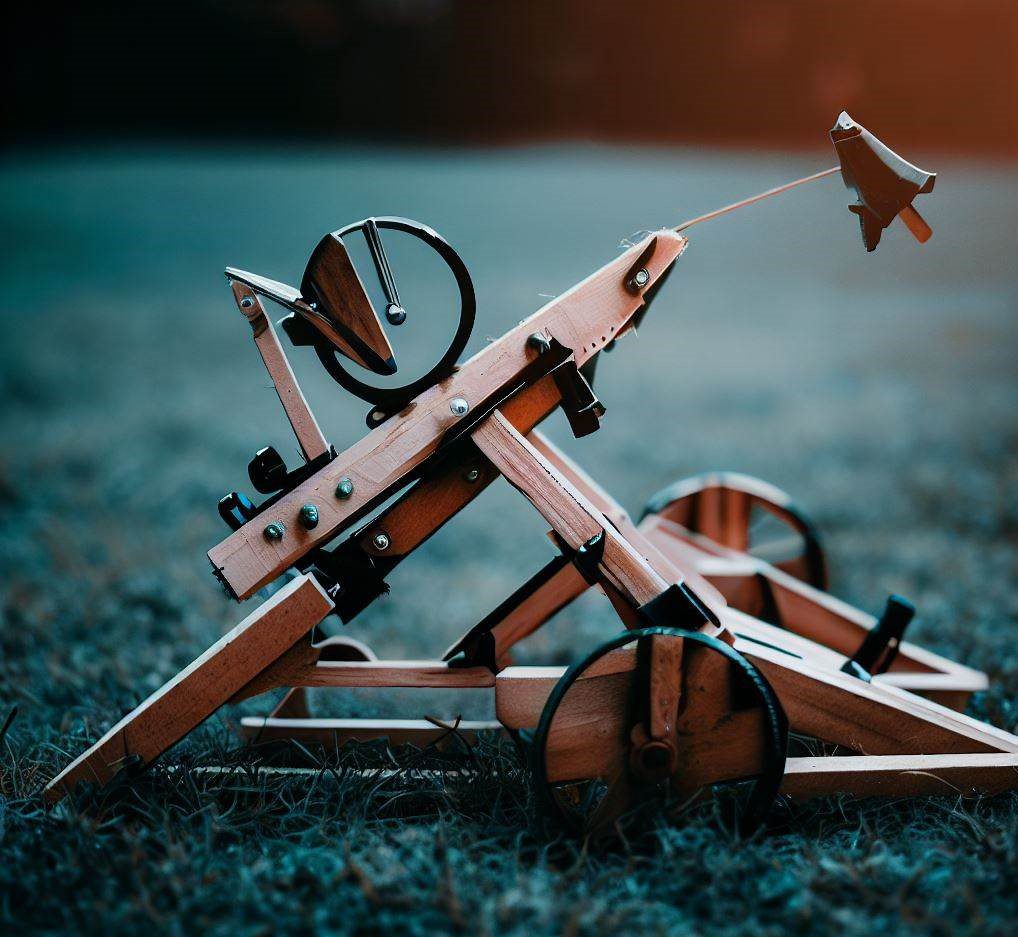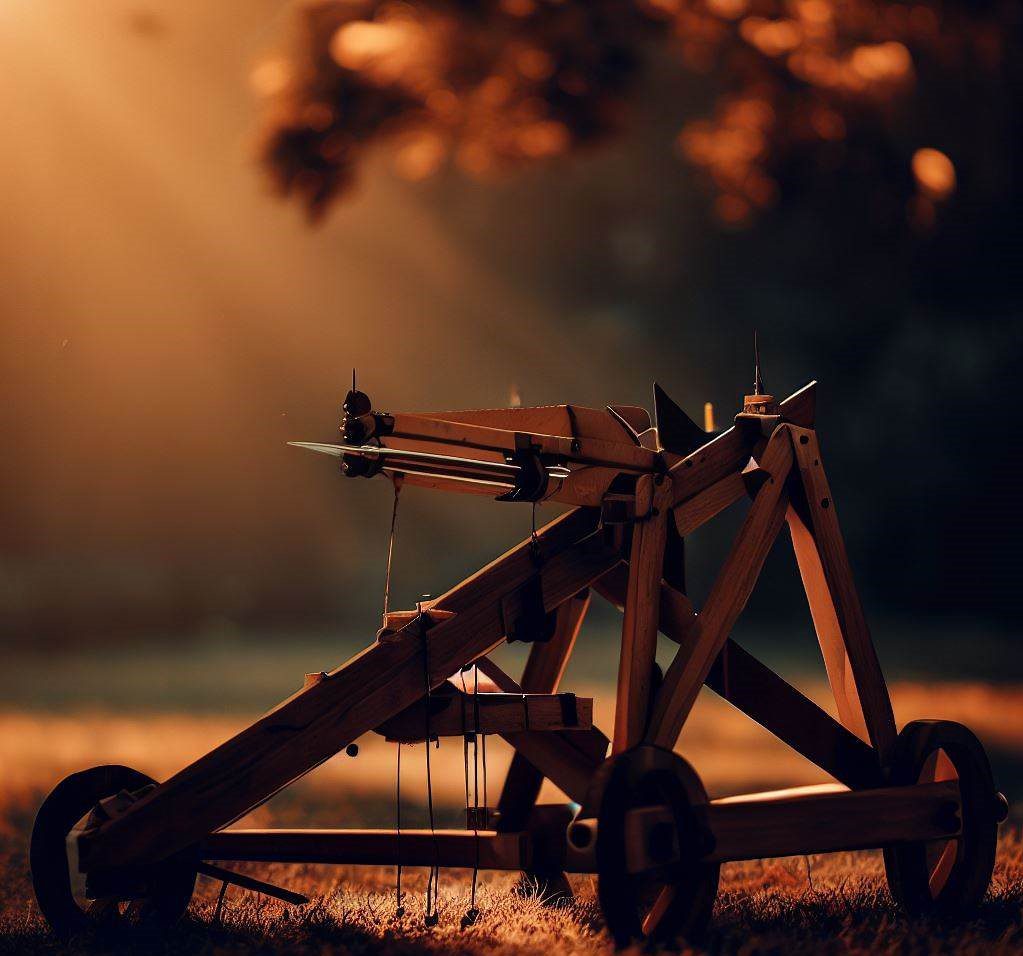Catapults have been used for centuries as a powerful tool for launching projectiles over long distances. From medieval warfare to modern-day backyard games, the design and functionality of catapults have evolved over time. However, if you’re looking to build a catapult that can launch a projectile the farthest distance possible, you’ll need to choose a design that is optimized for distance and accuracy.

When it comes to building a catapult for distance, there are several factors to consider. One of the most important is the materials used in construction. The ideal materials for a catapult for distance are lightweight yet durable, with a high strength-to-weight ratio. Common materials used in catapult construction include wood, PVC, and aluminum. Each material has its own advantages and disadvantages, so it’s important to choose one that will best suit your needs.
Another important factor to consider when building a catapult for distance is the design of the throwing arm. The throwing arm is the part of the catapult that launches the projectile, and its design can greatly impact the accuracy and distance of the launch. Some popular throwing arm designs include the trebuchet, the onager, and the mangonel.
The trebuchet is a popular throwing arm design that uses a counterweight to launch the projectile. This design is often favored for its accuracy and range, and can launch projectiles distances of up to 300 feet or more. However, building a trebuchet can be more complex than other designs, and requires careful attention to detail and precise calculations.
The onager, on the other hand, uses tension from twisted ropes or elastic bands to launch the projectile. This design is more compact and easier to build than the trebuchet, but may not be as accurate or have as great of a range.
The mangonel is another popular throwing arm design that uses tension from ropes or elastic bands, but also incorporates a counterweight. This design is often favored for its simplicity and ease of construction, but may not have the same range as the trebuchet.
Once you’ve chosen a throwing arm design, it’s important to consider the size and adjustability of the throwing arm. A longer throwing arm can often launch a projectile farther, but may also be less accurate. Additionally, an adjustable throwing arm can help fine-tune the distance and accuracy of the launch.
Another important aspect of catapult design for distance is the release mechanism. The release mechanism is what triggers the throwing arm to launch the projectile, and can greatly impact the accuracy and power of the launch. Some popular release mechanisms include the pin and trigger systems.
The pin system involves using a pin to hold the throwing arm in place, and releasing it when ready to launch. This system is simple and effective, but may require more force to release the pin and launch the projectile.
The trigger system, on the other hand, uses a trigger to release the throwing arm. This system is often more precise and requires less force to launch the projectile, but may be more complex to build and adjust.
In addition to the design of the catapult itself, there are several additional factors that can impact the distance and accuracy of the launch. One of these is the weight of the projectile. A heavier projectile can often be launched farther, but may also be more difficult to launch and less accurate.
Another important factor to consider is the angle and height of the launch. Launching the projectile at a higher angle can often result in a longer distance, but may also sacrifice accuracy. Similarly, launching the projectile at a lower angle can increase accuracy but decrease the distance of the launch.
Finally, adding counterweights to the catapult can help increase the distance and power of the launch. By adding weight to the back of the catapult, you can increase the force and momentum of the throwing arm, resulting in a longer and more powerful launch.
build a catapult for distance
If you’re looking to build a catapult for distance, there are several factors to consider before making a purchase. First and foremost, you’ll want to choose a design that is sturdy and reliable, with the ability to withstand the force of multiple launches. Additionally, you’ll want to consider the materials used in the construction of the catapult, as well as the ease of assembly and adjustability of the throwing arm.
Finally, you may want to consider any additional features, such as an adjustable release mechanism or the ability to add counterweights for increased distance. By keeping these factors in mind, you can find the perfect catapult design for distance on Amazon that will help you achieve maximum launch distance and accuracy.
Final Words
In conclusion, choosing the right catapult design for distance can make all the difference in your next competition or backyard game. With so many options available on Amazon, it’s important to consider the materials, sturdiness, adjustability, and additional features of each design before making a purchase.
By doing so, you can ensure that you are getting a high-quality catapult that will help you launch your way to victory. So why wait? Start browsing today and find the perfect catapult for your needs!
FAQ
What is the best material for a catapult for distance?
The best materials for catapults for distance are typically lightweight, durable materials such as wood, PVC, or aluminum. However, the specific material used will depend on the design of the catapult and the builder’s preference.
Can I build a catapult for distance on my own?
Yes, it is possible to build a catapult for distance on your own. However, it may require some knowledge of basic mechanics and construction, as well as access to the necessary tools and materials.
How can I increase the distance of my catapult launch?
There are several ways to increase the distance of a catapult launch, including adjusting the angle and height of the launch arm, adding weight to the projectile, and adjusting the tension of the throwing arm.
What is the maximum distance a catapult can launch a projectile?
The maximum distance a catapult can launch a projectile will depend on several factors, including the design of the catapult, the weight of the projectile, and the angle and tension of the throwing arm. However, some catapult designs have been known to launch projectiles distances of up to 300 feet.
Are there any safety considerations when using a catapult for distance?
Yes, it is important to take safety precautions when using a catapult for distance. This may include wearing protective gear such as goggles or gloves, ensuring that there are no people or animals in the launch area, and making sure that the catapult is stable and secure before launching a projectile.

